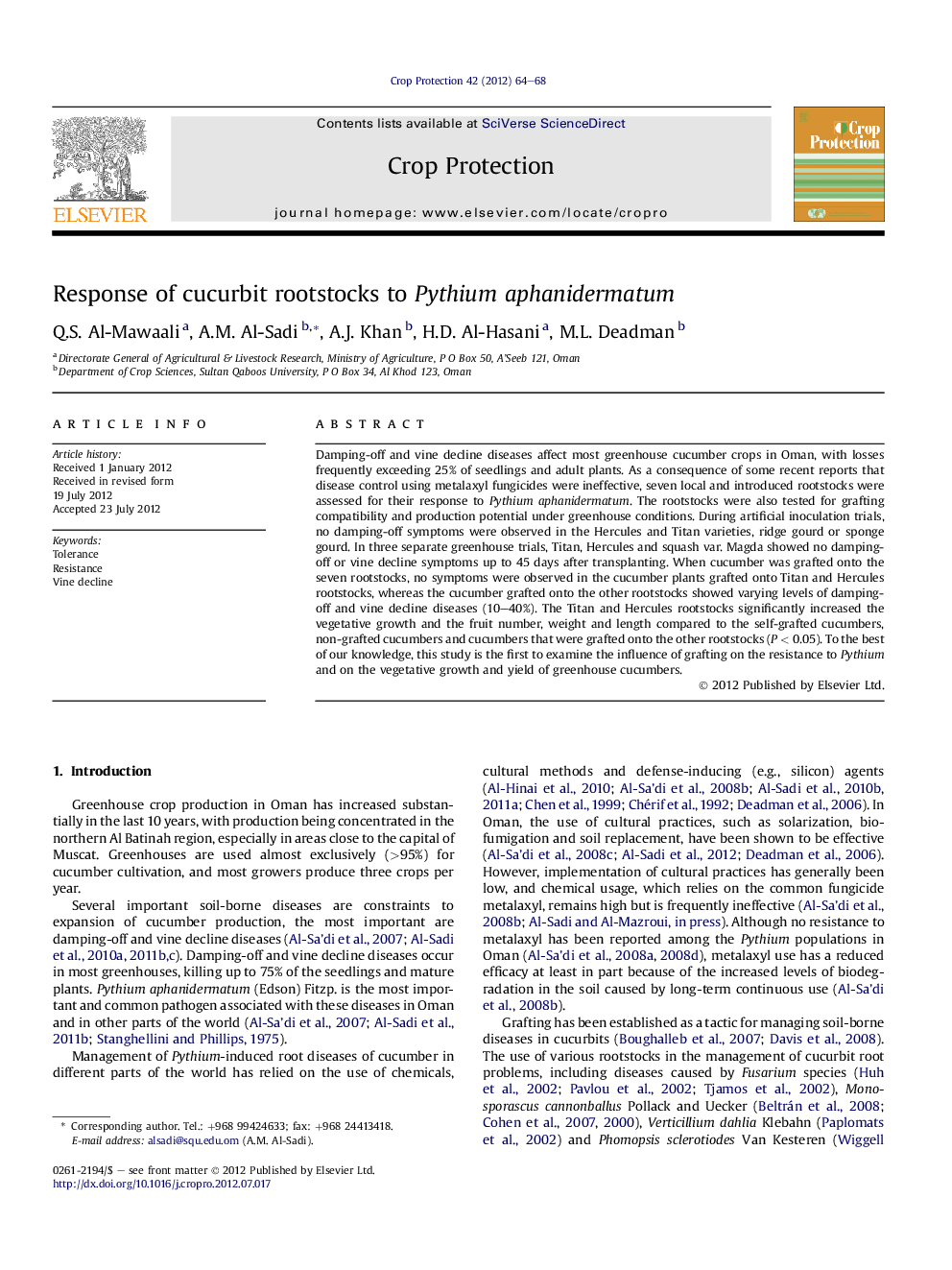| Article ID | Journal | Published Year | Pages | File Type |
|---|---|---|---|---|
| 4506143 | Crop Protection | 2012 | 5 Pages |
Damping-off and vine decline diseases affect most greenhouse cucumber crops in Oman, with losses frequently exceeding 25% of seedlings and adult plants. As a consequence of some recent reports that disease control using metalaxyl fungicides were ineffective, seven local and introduced rootstocks were assessed for their response to Pythium aphanidermatum. The rootstocks were also tested for grafting compatibility and production potential under greenhouse conditions. During artificial inoculation trials, no damping-off symptoms were observed in the Hercules and Titan varieties, ridge gourd or sponge gourd. In three separate greenhouse trials, Titan, Hercules and squash var. Magda showed no damping-off or vine decline symptoms up to 45 days after transplanting. When cucumber was grafted onto the seven rootstocks, no symptoms were observed in the cucumber plants grafted onto Titan and Hercules rootstocks, whereas the cucumber grafted onto the other rootstocks showed varying levels of damping-off and vine decline diseases (10–40%). The Titan and Hercules rootstocks significantly increased the vegetative growth and the fruit number, weight and length compared to the self-grafted cucumbers, non-grafted cucumbers and cucumbers that were grafted onto the other rootstocks (P < 0.05). To the best of our knowledge, this study is the first to examine the influence of grafting on the resistance to Pythium and on the vegetative growth and yield of greenhouse cucumbers.
► Titan and Hercules cucurbit hybrids are resistant to Pythium aphanidermatum. ► Grafting susceptible cucumbers on Titan and Hercules rootstocks helps manage Pythium damping-off and vine decline. ► Variation exists among different cucurbit rootstocks in resistance to Pythium infection.
